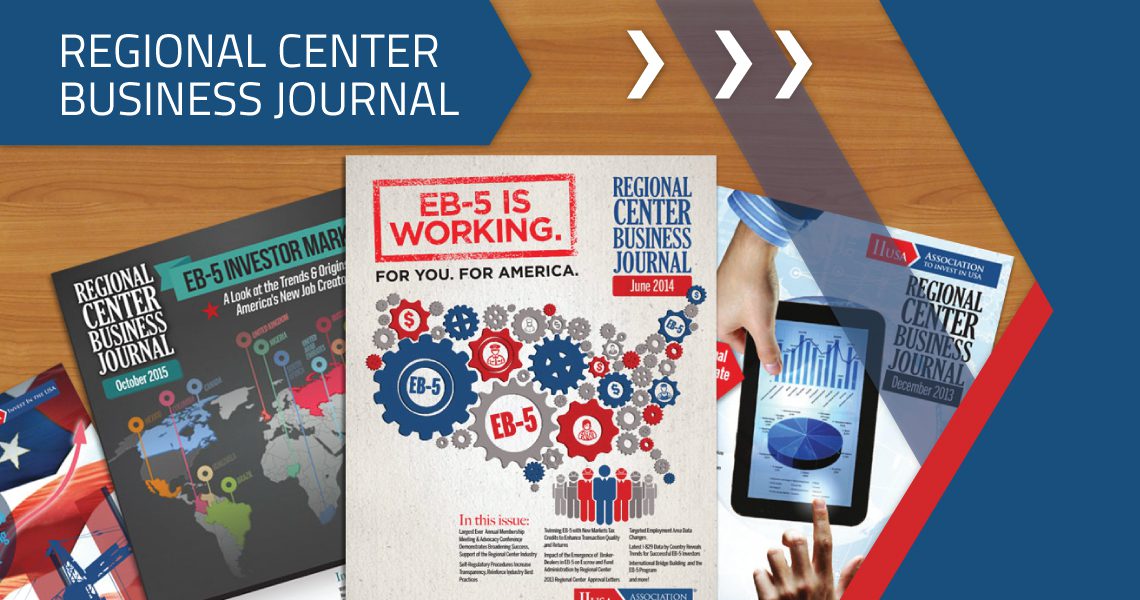 RIMS II Multipliers Updated for First Time since 2012
RIMS II Multipliers Updated for First Time since 2012
by Michael Kester, Economist, Impact DataSource
The Bureau of Economic Analysis (BEA) released new regional multipliers for the Regional Input-Output Modeling System (RIMS II) on Wednesday, November 18, 2015. In prior press releases, BEA announced that this release would entail a “modified” economic model, which caused some concern in the EB-5 industry. In the past, BEA had released both an annual series and a benchmark series. The main modification to RIMS II referred to by BEA is the discontinuation of the annual series. Fortunately, the annual series was rarely, if ever, used for EB-5 economic studies. The benchmark series, which is the most common and appropriate selection for EB-5 economic studies utilizing RIMS II, has been updated and improved.
Before this update, the previous RIMS II benchmark series multipliers, released in 2012, had been based on 2002 national benchmark input-output data combined with 2010 regional data. Due to reduced funding, BEA stopped providing regular updates to the multipliers. The newly released benchmark series multipliers are built on more recent data: 2007 national benchmark input-output data and 2013 regional data.
In general, the overall format and types of the benchmark series multipliers provided has not changed, so it appears RIMS II users will not have significant adjustments to make. The same six types of multipliers are provided (including final-demand and direct-effect employment multipliers) for both the detailed industry (Table 1.5) and aggregated industry table (Table 2.5).
Of course, the main question that EB-5 stakeholders will have is whether the new multipliers will help or hurt job count estimations. As the multipliers are region- and industry-specific, it is difficult to make any general predictions or conclusions. However, while the newly released multipliers are not that different aesthetically, a review of the newly released multipliers indicates some important changes that EB-5 economic studies will need to account for.
Besides the multipliers being reflective of more recent data, there are other notable changes. The updated multipliers are provided for 369 detailed industries (down from the 406). To provide USCIS a sufficient level of detail, most EB-5 economic studies would utilize the 369 detailed industries table. However, it should also be noted that the aggregated industry table, seen utilized in some reports, now has 64 industries (up from 62). As always, it is important to select the appropriate RIMS II industry, utilizing the NAICS descriptions as a guide. As the updated multipliers are based off of 2007 input-output data, RIMS II has provided a revised industry list which maps the updated RIMS II industries to the related 2007 NAICS codes.
For industries commonly used in EB-5 economic analysis, the detailed industry revisions related to the construction industry represent the largest change – likely with the most impact on RIMS II EB-5 economic studies. Previously, there had only been one RIMS II industry for construction – the generic “Construction” (RIMS II Industry 230000). The updated multipliers now provide four separate construction industries:
- Maintenance and repair (23030A)
- Nonresidential structures (2332C0)
- Highways and streets (233293)
- Residential structures (2334B0)
To properly model construction expenditures utilizing the new multipliers, RIMS II economic studies will need to select the most relevant construction industry based on the project activity(s). For certain projects (such as mixed-use projects that have nonresidential and residential components), this may now include utilizing more than one category.
The operational components for several common EB-5 project types will also be affected by other industry updates:
- The previous Nursing and residential care facilities (623000) industry, which includes assisted living facility and related projects, has been split into two industries. Assisted living/memory care facilities now fall under the new Nursing and community care facilities (623A00) industry.
- The previous Hotels and motels, including casino hotels (7211A0) industry for hotel related projects has been combined with a similar category; hotel-related projects now fall under the new, more general Accommodation (721000) industry.
- The previous Food services and drinking places (722000) industry has been split into three new industries, so restaurant projects will now need to select the most appropriate new industry to model operational activity:
- Full-service restaurants (722110)
- Limited-service restaurants (722211)
- All other food and drinking places (722A00)
The RIMS II industries for Architectural, engineering, and related services (541300), Real estate (531000), and Wholesale trade (420000), all commonly utilized in EB-5 economic studies, remain unchanged.
Other nuances in EB-5 economic studies will also be affected. In regards to the deflation (typically found in EB-5 economic studies to adjust project estimates of expenditures and revenues to the base year of the model), expenditures and revenues will require three fewer years of deflation as the new multipliers are based on more recent regional data (2013 versus 2010).
According to information on BEA’s blog, multipliers will be updated yearly with regional data, with substantial updates to the underlying national input-output data updated only for benchmark years (those ending in two and seven). Although the BEA has released new multipliers, it appears that they have not yet updated the RIMS II User Guide, as the version available on their website (as of the date of this article) is dated December 2013.
RIMS II continues to be the most popular input-output model utilized in the EB-5 industry. With certain aspects of the EB-5 program continuing to be under increased scrutiny – including job creation methodologies – and possible legislative changes on the horizon, EB-5 economic studies should continue to follow best practices. One best practice for EB-5 practitioners using RIMS II to follow is to properly utilize the newly released multipliers








